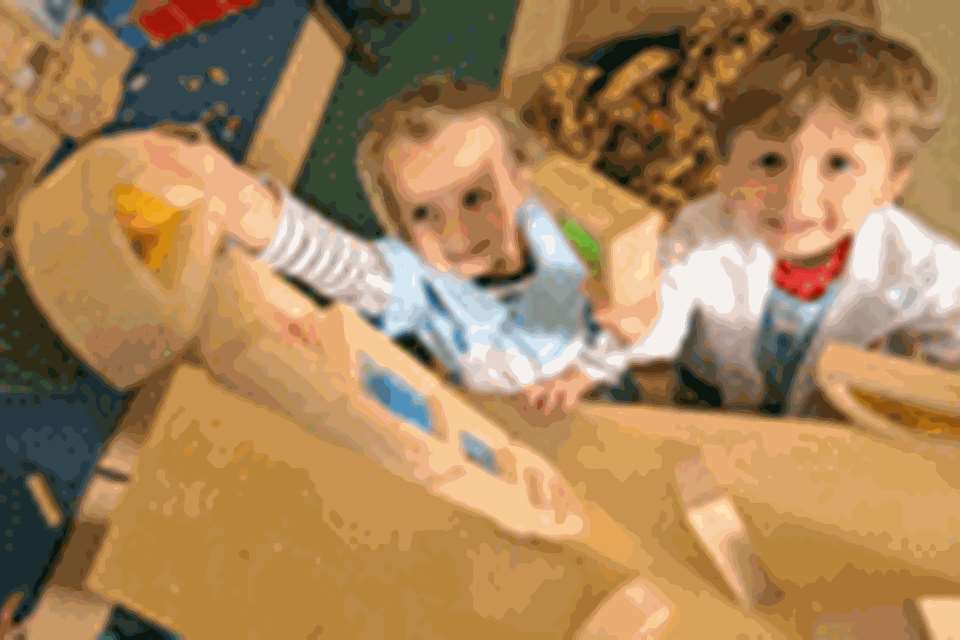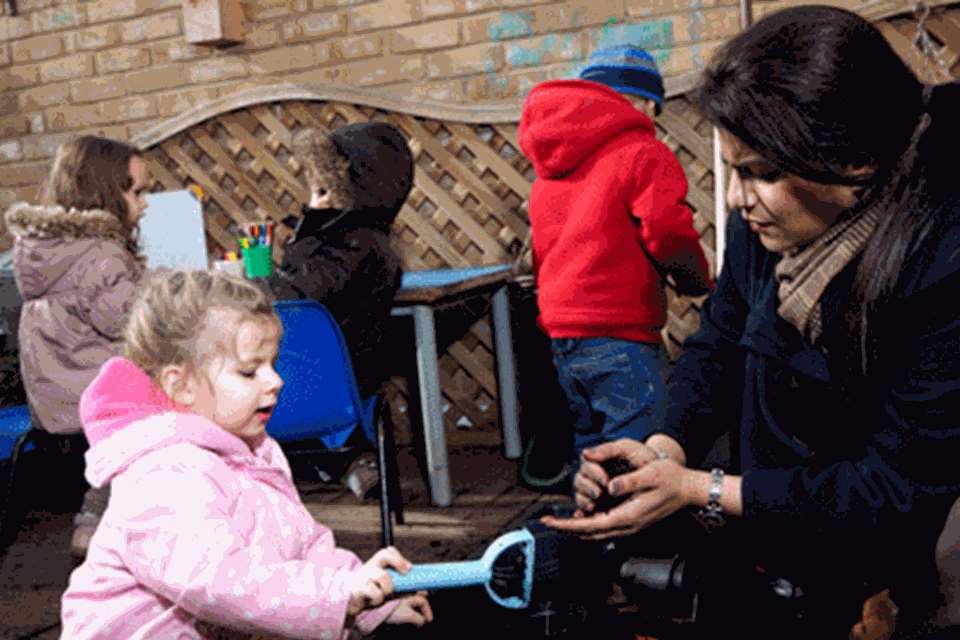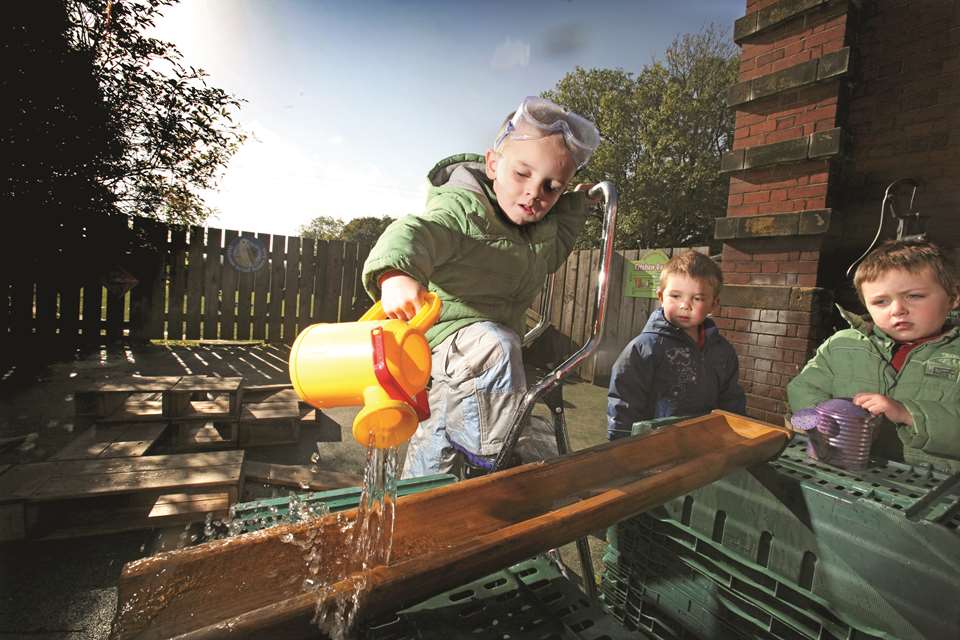All about… EYFS documents
Annette Rawstrone
Monday, April 30, 2018
While many are calling for EYFS guidance to be updated, others believe now is not the right time to do so. Annette Rawstrone unpicks the arguments from sector experts
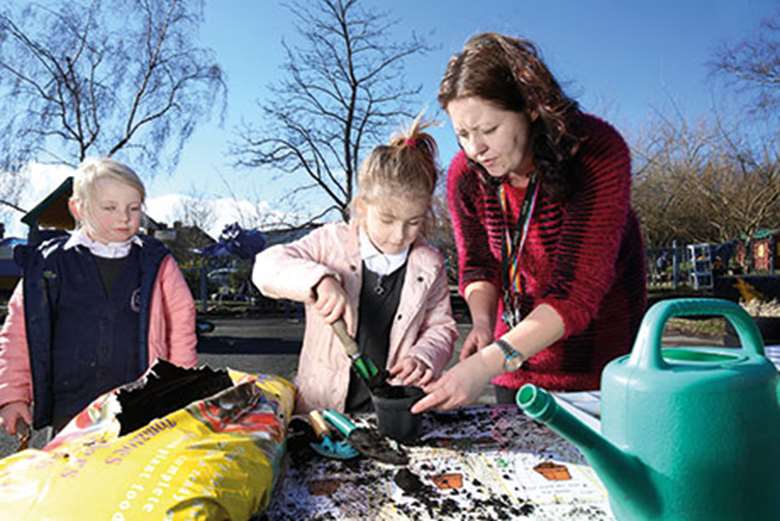
Download the PDF of this article
Ten years ago, early years practitioners in England could turn to an Early Years Foundation Stage (EYFS) folder that included the Statutory Framework and guidance, along with examples of non-statutory practice, a colourful poster, helpful reference cards and a CD. Gradually this has been stripped back to today’s single document, described by some as ‘technical’ and not appealing to the wider early years community. So, how did we get to this and is it time for change?
‘The original EYFS document wasn’t as dry as what we have now. It was launched by a Labour government but developed very much by the sector and really tried to give a lot of support so that people could see what practice looked like, and they welcomed it,’ says early years expert Nancy Stewart.
‘The coalition government followed but education was run by the Conservatives and they did not want to tell people much. They got the EYFS down to the Statutory Framework only. It’s a legal document and by its nature is very dry. People were asking what had happened to the photos and why they couldn’t see children in it.’
The only additional guidance commissioned by the coalition was Development Matters, because the revised EYFS (2012), with its seven areas of learning, did not align with the previous framework.
As co-author of the document, along with independent early years trainer Helen Moylett, Ms Stewart says they had to push for including prompts for adults along with child development – arguing that development is down to interaction – but this was later removed.
‘When the EYFS was first out it was about building secure foundations for children’s learning suitable for their age. By 2012, it was about school-readiness, which was not the original point of the document,’ she says. ‘We are now left with really important principles but just the bare bones.’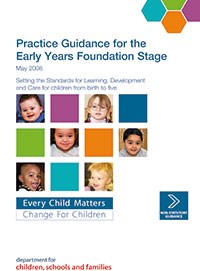
THE CURRENT FRAMEWORK
A sound document
The Statutory Framework remains a ‘child-friendly’ document because it is rooted in an understanding of child development and underpinned by excellent principles. Ms Moylett explains, ‘It has much of value, including legal requirements for play, Prime areas, Characteristics of Effective Learning, observational assessment and the key person.’
Early years adviser Julie Fisher agrees. ‘It should be given greater respect and support as it is. The fact that the key Characteristics of Effective Learning are embedded in the Statutory Framework gives every early years specialist leverage for sustaining play and active learning at the heart of their practice.’
Too unfamiliar?
Ms Fisher finds that practitioners are generally very positive about the document, are familiar with it and draw on its principles. In contrast, early years consultant Penny Tassoni says that when she is asked questions about practice during training sessions, she is often met with confusion when suggesting that they should check the EYFS framework.
‘Usually practitioners are quite surprised that there is an actual legal document,’ she says. ‘It’s like they’ve not seen it before, and for the people on the ground it’s often not the first source of reference.’
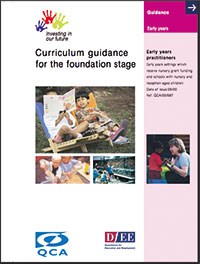 Too slight?
Too slight?
Although stripping back the EYFS was largely requested by practitioners, Ms Tassoni feels that its current version does not necessarily help them to have confidence in their practice.
‘The document is now so slight that I’m surprised many people don’t look at each paragraph and unpick it,’ she says. ‘It gives the skeleton of the EYFS but is not sufficient for some practitioners to understand the day-to-day business of what it means for their practice.’
Too technical?
A lot of expertise, knowledge, reflection and professional development is needed to understand fully what the short document means in practice, says Jan Dubiel, head of national and international development at Early Excellence. He likens the document to an iceberg with only ten per cent of it visible.
Tina Bruce, visiting professor at the University of Roehampton, who worked on the 2008 guidance, agrees. ‘The problem with the current EYFS is that it is in the main a technical document,’ she says. ‘What practitioners need, if it is to be useful, is examples of practice to illuminate it. Both the Curriculum Guidance for the Foundation Stage and the Birth to Three Matters frameworks had these, and the latter in particular was much loved and much used. The former gave practitioners confidence and a more consistent yet open and flexible approach.’
Mixed messages?
As well as being too technical, early years consultant Mary Dickins feels that the document also gives some mixed messages. ‘I feel they have swapped the emphasis on inclusive practice to become an emphasis on school-readiness and contradict the actual principles which I think are still sound,’ she says.
‘For example, on bilingualism it says that the home language must be valued, but then says that a child should be able to speak English before they start Year 1. I don’t think I’d know what to do as a practitioner. Bilingualism should be valued as a skill.’
She feels that practitioners need more detail and guidance, adding, ‘The framework and guidance is terribly weak on its own for practitioners starting now.’
Exemplification
Ms Tassoni warns that any additional exemplification in the framework would need to be cohesive – ‘the minute you introduce a large folder, then people feel it’s too much’ – and that it would need to be carefully balanced.
‘People like to know what to do, but if it’s opaque then it’s open to several translations, whereas if a lot of structure is put in, then it will make confident practitioners feel hemmed in,’ she adds.
Mr Dubiel also cautions that, while case studies and examples could be useful, people may see them as a prescribed solution or template rather than a suggestion.
POSITIVE, EFFECTIVE AND STRONG
Ms Stewart and Ms Moylett both urge against calling for change. ‘We are living in a time when we all need to be pulling together and discussing what is positive, effective and strong about the EYFS,’ says Ms Moylett. ‘Early years has never been in greater danger of being colonised by others who do not value the EYFS as an important key stage in its own right and see it as a waiting room for school.’
As evidence of a ‘sustained assault on the principles of the EYFS’, she cites:
- The Government’s primary consultation and plans to introduce baseline assessment into Reception.
- The Teaching Schools Council (TSC) report on Effective Primary Teaching Practice (2016), which recommended revising the Reception Year (YR) to address ‘confusion about expectations among teachers and heads’.
- Ofsted’s recent Bold Beginnings report.
‘The brunt of the attack is on Reception,’ she adds, ‘but the knock-on effects could be major. If we do not fight the formalisation of Reception, the downward pressure will be felt across the sector.’
Early Excellence undertook The Hundred Review in response to the TSC report, with one recommendation being that the Department for Education should ‘reaffirm its commitment to ensuring that YR remains an integral part of the EYFS’.
‘The EYFS differs from the National Curriculum for sound, well-evidenced reasons relating to child development,’ adds Ms Moylett. ‘Good transitions do not come from diluting good early years practice with elements of primary practice. On the contrary, with a school starting age of five – one of the lowest in the world – KS1 needs to take on board key elements of early years practice, such as supporting the Characteristics of Effective Learning. The early years do not stop at five, but at seven or eight.’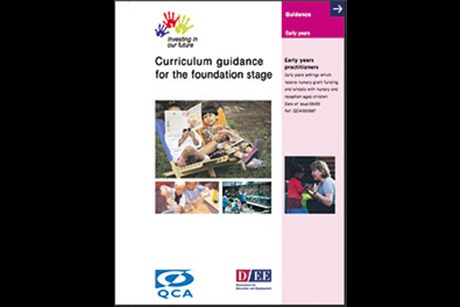
GUIDANCE: OLD, NEW AND COMPLEMENTARY
While Ms Moylett says it was great to have the original EYFS folder, she believes that no government will invest in documents like them again – ‘it was made clear after the review that the only hard copy of anything was the statutory framework’. However, she urges practitioners to remember that none of the guidance, neither for the Foundation Stage (2000) nor any version of the EYFS, has been banned and remains useful.
Ms Fisher thinks that the 2008 EYFS guidance cards, which can still be accessed online, are an ‘excellent quick reference material and guidance’ – and ones she would like to see referenced at the end of the Statutory Framework.
What is in the pipeline is guidance by music consultant Nicola Burke. Called Music Development Matters, the document mirrors the format of Development Matters and aims to raise awareness of children’s music-making, the cross-curricular learning that it brings and how to nurture children’s musicality.
Wish list
Ms Tassoni agrees that ‘there are plenty of excellent materials around and settings can use any source that they find useful to inform their practice’. However, she adds, ‘If I were to dream of what we should have, it would be a very clear age-and-stage document that stated what you should expect to see and when to be concerned, because there is uncertainty about what is significant or atypical and when we need to be concerned.’
She currently recommends the Early Years Developmental Checklist produced by Solent NHS as a resource for practitioners to assess children’s development effectively.
If there were to be new guidance, Ms Fisher believes that it should be aimed at head teachers, senior leaders, advisers and inspectors who are currently demanding practices that do not marry with the EYFS framework and its principles.
TRAINING NEEDS AND THE STATUS QUO
Generally, however, the feeling is that no amount of change to the framework or new guidance would be able to address current practice problems.
Professor Bruce says, ‘What would help is to focus on the characteristics of learning, but to bring them alive with practical workshops and examples from improving the observation skills of practitioners, together with professional dialogues and sharing. Continuing professional development is key, and increasing the funding for this would be a step in the right direction.’
There is widespread concern too that change could undermine the current principles. Ms Stewart says, ‘If we were to change things now I’d be very much concerned that it would be part of the agenda to move Reception and the EYFS in line with the Primary National Curriculum, which many people argue isn’t appropriate for primary children either.
‘When the original EYFS was put together there was a big emphasis on current research and huge consultation of the sector. Now the Government pulls in two or three people and it’s a done deal rather than a conversation, debate and proper engagement with professionals. I feel we should protect what we’ve got for now until there is proper respect and dialogue on the Government agenda.’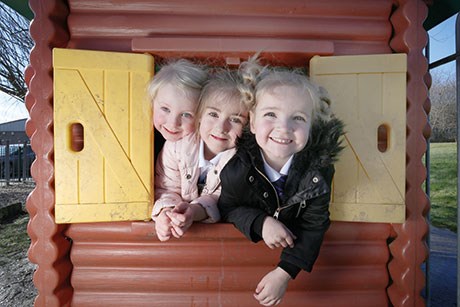
WHAT COULD BE STRENGTHENED?
Provide a greater focus on the Characteristics of Effective Learning (CoEL)
‘It’s not all about the early learning goals but who children are as learners,’ says Ms Stewart. ‘This is an area that could use clear guidance and be brought much more into focus. At least it’s in there, but we need more.’
Clarify the continuum of play and playful learning
This should include a better description of why play matters and how children develop the CoEL through their play.
Raise the profile of the key person
This would include providing more detail on terms of attachment, relationships and the emotional component, rather than just keeping records of children. ‘The role of the key person is in the EYFS, but I question whether Ofsted drills down into how much time children spend with their key person and the bond they form,’ says Ms Tassoni.
Incorporate more elements of Birth to Three Matters
Ms Fisher feels that not enough of the Birth to Three Mattersdocument (2003) found its way into the revised EYFS, resulting in a huge loss of practice information and examples to those working with that age group.
Give advice on how to respond to the 30 hours childcare offer
‘The needs of children throughout the day change and so practice needs to change, especially for those settings that have not traditionally done 30 hours. I’d like to see more supportive practice and more coherent messaging about what provision may look like,’ says Ms Tassoni.
Revise the goals for literacy and phonics
While early years specialists are extremely cautious to voice this for fear of being misinterpreted, they want the goals to be more developmentally appropriate, rather than made harder in order to bring them in line with Key Stage 1.
Provide more continuing professional development and the funding for it
‘Practitioners need to be in a position where they are sufficiently well trained to be able to use the documents of the country in which they work, rather than the document using them and so undermining their possibilities to do what is good for our children,’ says Professor Bruce, who recommends the Froebel Travelling Tutor courses for connecting to the EYFS requirement of accountability, as well as creating communities of staff learning.
Make early years training compulsory for primary head teachers
‘Where there is confusion among Reception teachers, this will most likely come from heads and leaders who are pushing for practice that does not align with the statutory requirements of the EYFS,’ says Ms Moylett. ‘Confusion among heads may arise when they have little training or experience within the Foundation Stage. As the Iram Siraj Workforce Review recommended in Scotland, perhaps it is time for all primary heads in England to have mandatory training on early years pedagogy and child development.’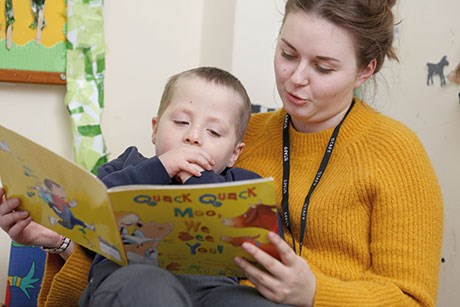
MORE INFORMATION
Curriculum Guidance for the Foundation Stage (2000), https://bit.ly/2HBCDKT
The Early Years Foundation Stage: Setting the Standards for Learning, Development and Care for children from birth to five (2008), https://bit.ly/2HfTcgl
Birth to Three Matters, https://bit.ly/2qMbBqB
Bold Beginnings, https://bit.ly/2qKwS3Q
Development Matters (2012), https://bit.ly/1p8aia9
Current EYFS framework, https://bit.ly/2zq9paW
Early Years Developmental Checklist, https://bit.ly/2vjhkVX
The Hundred Review, https://bit.ly/2HztCCd
Froebel courses, www.early-education.org.uk/froebel
Music Development Matters, a free resource launching in September, www.musicforearlyyears.co.uk
Iram Siraj Workforce Review, https://bit.ly/2HWodmw


